A Digital Dental Transformation
How EHR, teledentistry, and “next-generation” software are changing the face of dental patient care.
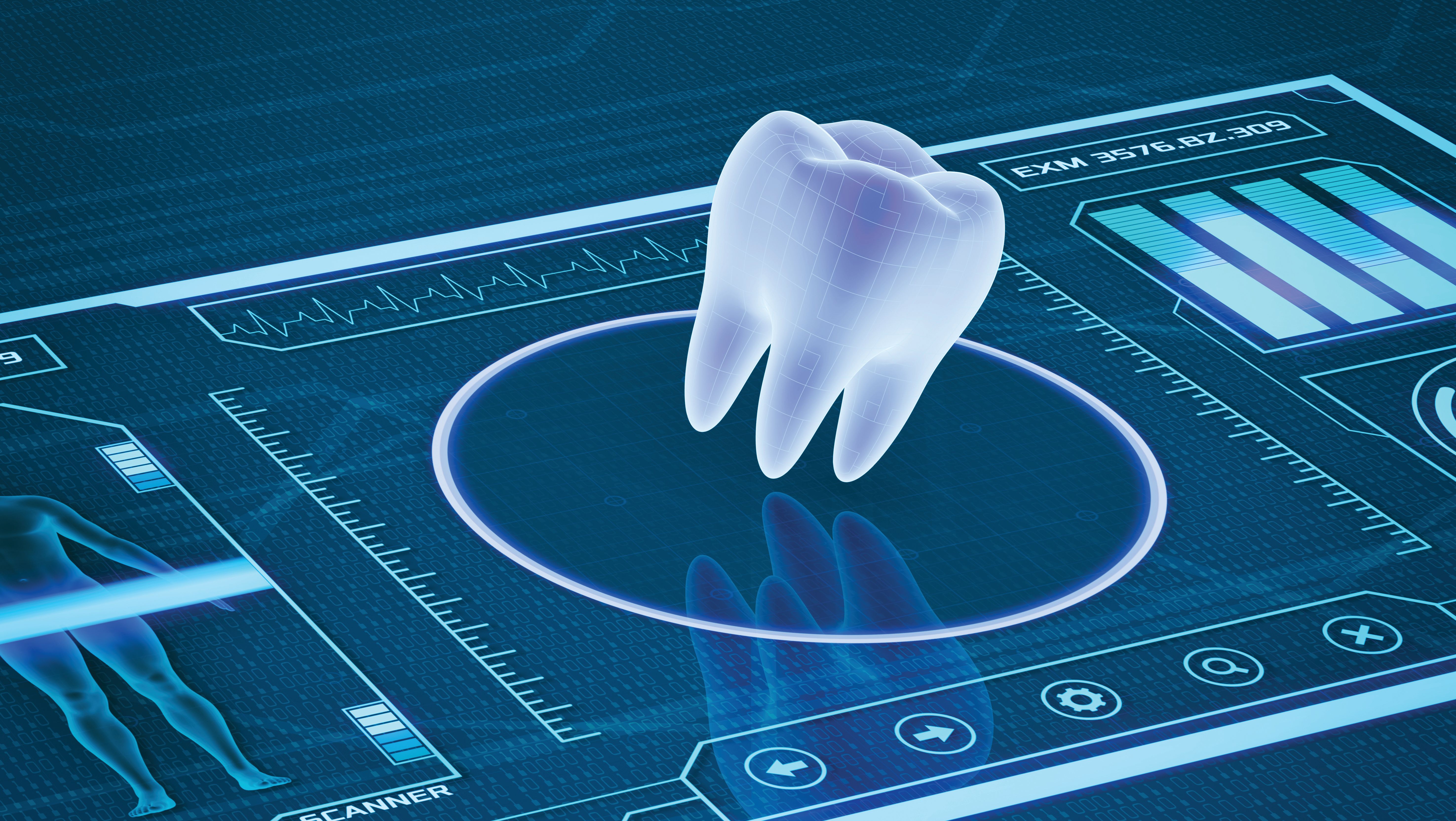
We are in the midst of a dramatic dental software revolution accelerated by exponential innovation in technology. When we look back on the next couple of years, we will find that they represented the beginning of a sea change not just in technology, but in the ways that dental groups, practices, and dental service organizations (DSOs) do business and address patient care.
Having been involved with both medical and dental software technology and innovation for more than 20 years, as a software and IT consultant, educator, and thought leader, and previous software development manager, I can tell you that these are exciting times in dentistry. They remind me of when “next-generation” software technology changed patient care models in medicine.
Through that earlier technology revolution, I learned that organizations whose leaders embraced the technology advancements continued to be successful, and those whose leaders kept their heads in the sand fell behind and failed to keep up with their counterparts.
This was, and remains, true not just for groups and practices, but for vendors as well. In medicine, I saw innovative, aggressive software vendors move to the top of the heap, and vendors who did not innovate or embrace new technology models fell behind, and in some cases, went out of business.
As a consultant helping groups, DSOs, and practices evaluate and purchase software technology, I’ve been looking forward to software innovations that address and improve not only practice management operations but also clinical operations in patient care.
I believe these innovations will help my clients continue to provide exceptional patient care and outcomes, and thus differentiate themselves from competitors who don’t embrace these important software technologies.
I am continually fascinated by innovations brought to market by forward-thinking vendors. Unfortunately, for the most part, dentistry has lagged behind, with the main software focus on traditional areas of practice management. But just as medical software transitioned a few years ago to put major emphasis on clinical and patient care innovations, dentistry is beginning to follow that same path.
Carestream is developing software to provide automated customized workflows to reduce the need for in-depth training for clinicians.

So, what is “next-generation” software? By definition, it is “any method or technology that is expected or intended to supersede present-day techniques.” What does this mean in the context of current dental software technology and functionality? Well, I could write a book about all the innovative clinical and patient care–oriented features and functionality that are being embraced by innovative software vendors on a daily basis, but our space here is limited.
In this article, I’ve distilled and organized some of the state-of-the-art software technologies, categorized in a few major areas, that are helping to change the industry. You’ll get a glimpse into what areas you should be thinking about as you contemplate how your future as a dental practice, group, or DSO will be dramatically changed by this clinical software revolution.
Dental EHRs
Electronic health records (EHRs) have been dramatically changing health care over the past decade and are finally being integrated into some dental software platforms. But be clear: When we use the term EHR, we are not just talking about electronic dental charting capability. I have talked to several groups, DSOs, and practices who believe they have an EHR system, when in fact, they just have paperless charting. A true EHR system should capture individual data fields via customizable clinical templates in a structured database so they can be used for all kinds of patient care–related features.
With the growing sophistication of EHR functionality and features that are being developed by some vendors, tools are emerging to support oral–systemic health growth. In the past, the general dental community’s overall impression was that oral–systemic health was mostly about gum disease and heart disease. But more and more research results are showing links among temporomandibular joint disorder, metabolic pathway interferences, oral cancers, and other diseases and conditions.
An EHR can instantly give you real-time, research-based information on how you might handle a given problem. No provider can keep up with all current research, so having a tool that can offer clinical decision support helps providers make intelligent decisions about their patients based on information in clinical databases.
MouthWatch enables the clinician to explain the recommended course of treatment and make a strong case for acceptance with such visual aids as radiographs and intraoral photos.

Note that there is never any requirement to follow the guidelines that are presented, but it’s helpful to have evidence-based information while you’re making decisions. With an EHR, you can automatically retrieve possible courses of treatment related to a patient’s problems and issues.
Although the use of analytics and business intelligence is becoming more common within the financial and operational aspects of a DSO or group, we’re just starting to see the rise of EHR and analytics use when it comes to clinical patient care.
With the utilization of structured data within EHRs, an intelligent organization can use clinical data from past visits to improve outcomes for their patients. With patient clinical data residing in a relational database coupled with the use of analytics tools, a DSO or group can improve patient care based on how it has performed successfully or poorly in the past.
Importantly, dentistry and oral health shouldn’t be considered as an individual silo, but as a major component in a patient’s overall health care. Over the years, and at an expanding rate, oral–systemic health research results have shown this to be true. However, in medicine, patient data can be shared among hospitals, primary care physicians, and specialists through the use of EHRs, but we typically don’t find dentistry and oral health included in this network of information.
This is changing: Research and case studies point toward the positive impact of coordinating dental and medical patient information, as well as of providers collaborating across these disciplines.
I’ve given numerous presentations on the growing use and application of dental EHRs, in which I note the growing standards for interoperability between medical and dental systems. When a patient is sitting in the operatory, it’s very possible that a dental provider could best serve that patient by electronically accessing their medical information including all medications, diagnoses, procedures, medical history, and other clinical factors that weren’t provided by the patient.
With an EHR, the necessary medical information should be at their fingertips. With the burgeoning growth of interoperability and health information exchange, the medical provider, in turn, should be able to receive similar information electronically into their system from the dental provider. Thus, EHR technology helps facilitate this collaboration and team approach; without it, such collaboration would be much more difficult, if not impossible.
Planmeca’s Dental PACS solution can support CAD/CAM as well as standard 3D formats.
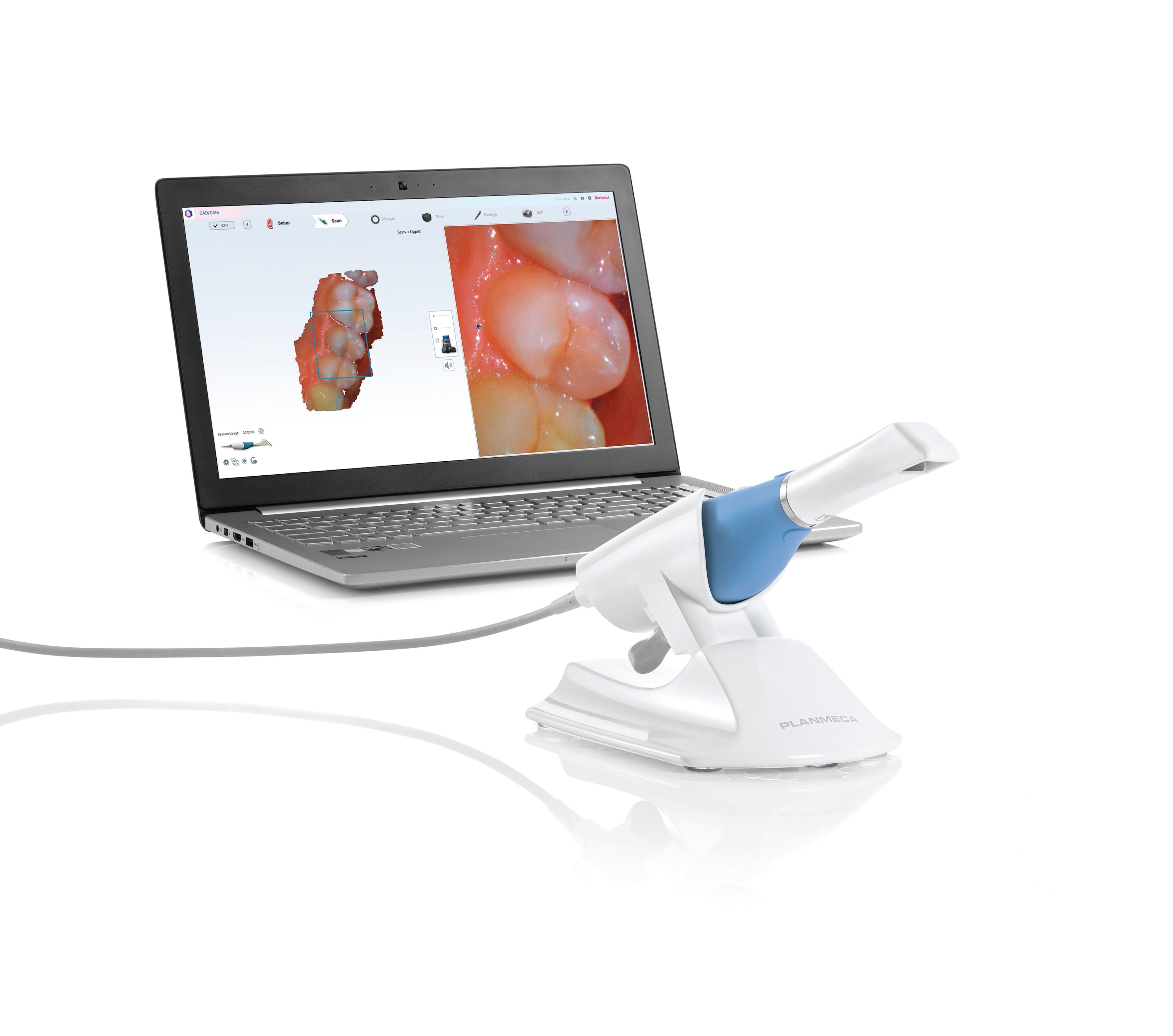
For the most part, dental organizations are just starting to embrace EHRs as critical to their operations. Contrary to what some in the dental industry believe, standards actually are in place for the sharing of patient information among systems in health care supported by structured data-based EHRs. And this EHR interoperability isn’t just for sharing clinical data between medical and dental groups. Isn’t it just as important to share patient data within the dental industry between general dentists and specialists?
David Danielson, MBA, product manager at Henry Schein One, has been on the front lines of the interoperability revolution. He notes that in addition to evolving software technology and networks for interoperability, the success of interoperability in improving patient care rests on 2 additional factors: getting more relevant information into the integrated patient record; and being able to pull information from not just the patient’s providers but also from devices and applications that the patient uses in their daily life.
We are changing from a reactive health care world to more of a proactive one, as intelligent systems and databases will be able to spot information trends that highlight potential health problems.
Intelligent Rules-Based Workflow and Worklist Management
For years, I’ve been talking to dental software vendors on behalf of my clients, looking for the same customizable, intelligent rules-based workflow and worklist management functionality that I have seen in medical software.
Ed Shellard, DMD, Carestream Dental’s chief dental officer, and Jeff Telford, Carestream’s director of software product management, shared with me how intelligent rules-based workflows can help provide optimal patient care. Carestream Dental’s software as a service, Sensei Cloud, is designed to provide optimal clinical results irrespective of the experience level of providers.
This is especially relevant when you get to the areas of DSOs or corporate dentistry where turnover is more common. Sensei Cloud offers automated workflows that reduce the need for in-depth training for practitioners and staff. Carestream Dental feels clinicians shouldn’t have to adapt to the software, rather the software should adapt to the way clinicians work.
Currently Carestream is working to add customized clinical workflows to Sensei Cloud that will offer rules-based logic to take a clinician through a given process, prompting them at various steps and providing functionality that allows them to take relevant actions. Because Carestream offers both imaging hardware and dental software, the ultimate goal is to merge the imaging platform with the practice management software in a single solution to produce a unified clinical workflow that automatically presents the steps needed in a patient clinical visit, thereby reducing the level of training needed.
Apteryx Imaging’s XVWeb cloud-based imaging software.
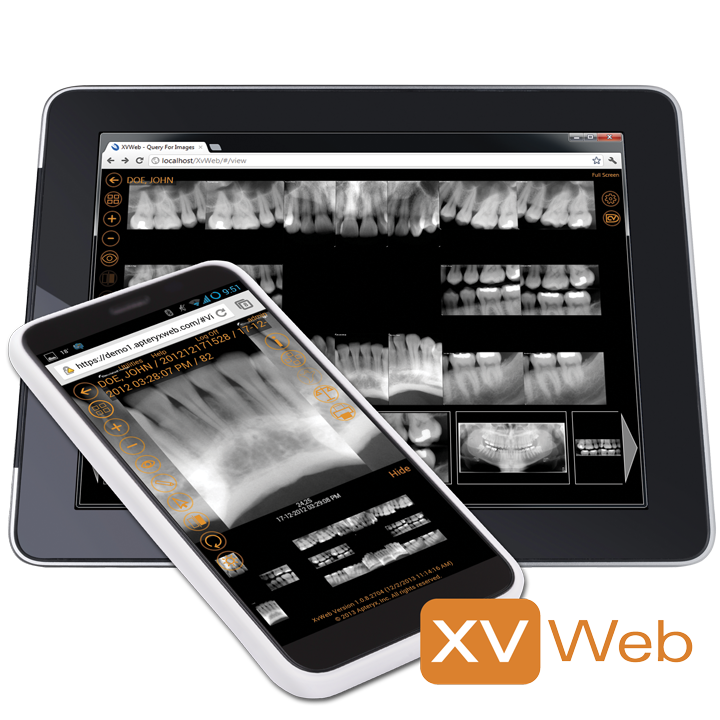
Sensei will include additional levels of decision support capability that will provide both a determination of what type of resources and/or skill sets are needed on a certain case, and procedure recommendations based on the underlying imaging. With customized clinical workflows based on machine learning, the goal is to provide excellent clinical outcomes no matter the level of experience of the provider. Also, new Intelligent features will be able to track the progress within workflows and at various steps so patients can be notified if things aren’t moving according to plan.
Jana Macon, EVP of customer success at Curve Dental, is excited about Curve’s introduction of automated worklists (“Smart Action Lists”) and automated workflows as part of Curve’s new, integrated patient engagement engine. Curve is incorporating rules-based, customizable, intelligent worklists that are automatically generated by the patient engagement engine.
For example, a group or practice can create a campaign with a series of “if-then” rules to kick off reminders to specific patient groups. Depending on the patients’ response to those reminders, the system will create specific tasks on the Smart Action List for the front office to complete.
Rules-based workflow management is revolutionary for dentistry as it creates automation, enforces best practices, and delivers an auditable trail of all activity that occurs. Also, the Smart Action List is customizable, filterable, and dynamic, allowing for group collaboration so staff can triage the list until everything is completed.
Curve Dental is incorporating customizable, intelligent rules based work and task lists into their work list builder.

Soon this technology will be used to mine treatment plan data to produce campaigns that automatically target specific patients for needed procedures. The tool is designed to make patient communication easier and far more efficient for the staff in order to facilitate improved oral health for patients.
3D Image Management, Machine Learning, and Practice Management System Integration
Patrick Williams, technical director of Apteryx Imaging, is in the thick of developing “next-generation” imaging software platforms. Williams points out that there has been an explosion of 3D imaging devices, and they need to be efficiently managed on one platform. Real-time cloud imaging is more of a reality now than previously, because of much successful work in 3D optimization. Apteryx is developing a cloud ecosystem for 3D image management from a capture, data organization, and distribution perspective.
Because 3D imaging is growing more popular in the cloud, Apteryx developed a 3D viewer to support that. Instead of burning CDs or sending unsecured 3D images through email for distribution and/or radiographic review, which can be problematic because of the large sizes of 3D files, you log into a secure portal and receive the images quickly in a secure environment.
The ease of moving 3D images means enhanced overall patient care: Specialists as well as the provider can review images. Radiologists can collaborate on sophisticated cases just as they do in the medical world. One great example: A provider might not have either the time or the skill set to efficiently plan an implant case based on imaging, but now, he or she can efficiently send images with cloud-based distribution to a radiology firm with expertise in designing and planning the type of implant case in question.
After review, the radiology firm develops 3D models to assist the provider in the procedure and sends them, also via the cloud.
The exciting application of machine learning to imaging diagnostics is advancing quickly, says Williams. Based on quick, real-time analysis of large data sets, an intelligent imaging system can pinpoint areas of concern on which the provider should focus. This is a game-changer in clinical diagnostics, Williams notes.
What is also remarkable from a quality assurance standpoint is that you’ll be able to do analytics on the quality of captured images and report back on potential issues. For instance, in a multilocation group or DSO, the clinical manager can review images from various locations, easily discern if problems exist, and implement steps to rectify them.
Brent Garvin, senior product manager of Planmeca, discussed the imaging management technology contained within the Planmeca Romexis® software platform with me. An integrated platform with one central database, he says, is key to managing all 2D images, photographs, intraoral camera images, 3D images, and CAD/CAM. This way, the clinician doesn’t need to go to different software modules to get the information.
Image collaboration and sharing among providers is made easier with the HIPAA compliant Planmeca Romexis Cloud service. Images transported via the cloud are immediately made available within the dental software itself and it alerts the user when images are available for viewing. Conversely, the clinician sending the image also gets notification that the file has been received.
With Opera DDS, the care team can use different devices, such as phones, tablets and laptops, to communicate throughout the day.
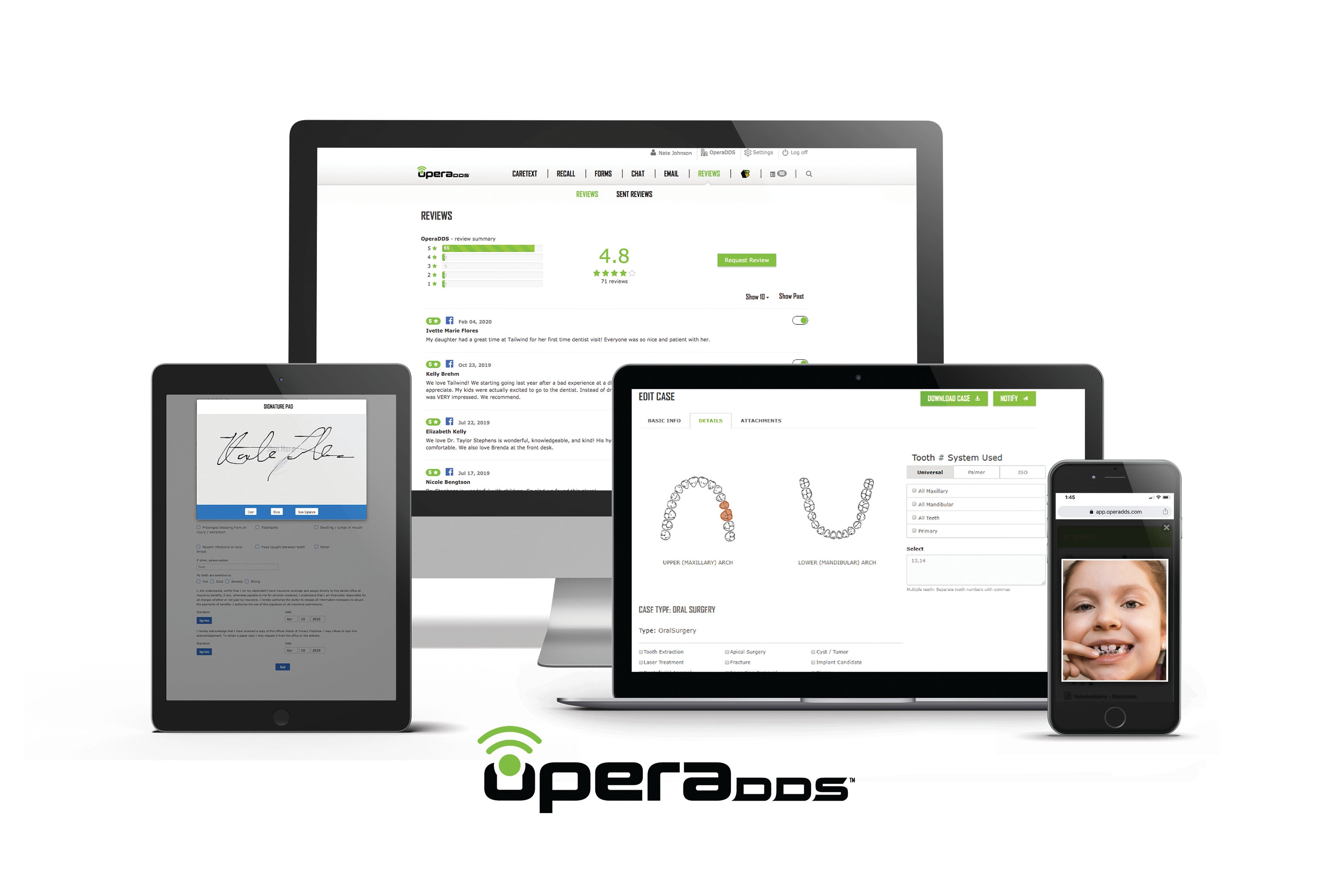
Collaboration between dental and medical professionals is becoming more important, especially in targeted growth areas such as sleep medicine. From a patient education standpoint, presenting 2D and 3D images is helpful for case acceptance.
Garvin outlined how Planmeca’s Dental PACS solution can support CAD/CAM as well as standard 3D formats. The growing sophistication of image file management systems allows clinicians to search and filter for specific images in a number of different ways. Analytical data on networked devices give the dental organization the ability to monitor and track equipment usage and helps with scheduled maintenance.
Danielson of Henry Schein One explains that the future will bring a closer level of integration between imaging software and EHRs with no need for “bridging” software, and once images are directly placed into EHRs you’ll be able to do much more with the image data. Shellard and Telford at Carestream agree, noting that this higher level of integration is built into their practice management system because they control both the hardware and software development.
Teledentistry, Virtual Care, and Online Collaboration
These days, I recommend that all my group, DSO, and independent practice clients consider integrating various aspects of teledentistry into their overall software plans. As I discuss in my eBook “The Teledentistry Survival Guide,” this technology is much more than a tool to cope with the coronavirus disease 2019 (COVID-19) pandemic. Most experts agree that it is essential in a post–COVID-19 world where, for many reasons, dentistry will morph into a combination of virtual and onsite workflows.
Online web portal–based forms management allows the patient to have all relevant information regarding their case submitted to their provider before they step foot in the practice. In addition, much of the follow-up care can be done virtually, which will encourage better compliance
I spoke to Bill Jackson, DDS, chief operating officer of Virtual Dental Care, about where teledentistry-based case collaboration among providers is headed. In creating their cloud-based product, Virtual Dental Care sought to facilitate secure synchronous and asynchronous communications for one-to-one, one-to-many, and unlimited subgroupings of patients, with exchanges among dental professionals, medical professionals, subject matter experts, patients, and any other appropriate parties.
With Virtual Dental Care’s product, any subscriber can invite others to join their network. Once a professional is in the subscriber’s network, referral is easy. Simply identify the patient, then choose the professional and the records to be shared. Once the records have been made available for sharing, both the professional and the patient are informed via text/email.
The product also includes the ability for the subscriber to create an unlimited number of groups—public or by invitation only—for any users in their network. Group members are informed when any group-related activity takes place. This concept need not be limited to case collaboration. The potential is endless: teaching and learning new techniques, mentoring, introducing patients to a specialist, using a translator, and so on. What started out as a design to easily refer patients to specialists or to peers has now turned into a tremendous tool to maximize treatment outcome through very powerful peer-to-peer collaboration.
Brant Herman, CEO of MouthWatch, has some interesting takes on why teledentistry software will continue to help groups, DSOs, and practices be successful post COVID-19. Teledentistry does not necessarily add additional steps to the traditional office workflow, he explains. In most cases, it replaces existing steps with safer, time-saving, virtual equivalents. For example, many patient encounters—including new patient registration, hygiene home care instruction, postoperative evaluations, provider consultation, case presentation, and specialist referral—can be conducted virtually as live discussions or with convenient messages and recorded videos.
Live video conferencing brings a “face-to-face” component to communication that makes the patient/clinician dialogue more personal and instills trust. An important added benefit is that teledentistry encourages patients to ask questions as they arise and to actively participate in maintaining their oral health and ultimately their overall health. The result: better total health outcomes.
People neglect their dental care for various reasons, including lack of time, travel obstacles, anxiety, and difficulty finding a dentist with whom they feel comfortable. Teledentistry addresses all of these concerns, with convenient virtual consultations that can provide the patient with additional convenience and peace of mind prior to being scheduled for an appointment.
MouthWatch uses teledentistry to enable the clinician to explain the recommended course of treatment and make a strong case for acceptance with such visual aids as radiographs and intraoral photos. Because the patient is in the comfort of their own home, they are more relaxed, and thus more likely to understand and accept the treatment plan; this in turn enhances their patient care. What’s more, presentations of more complex treatment plans can include key specialists and the care team for a more effective, coordinated talk.
Asynchronous functionality allows robust communication and collaboration to take place in the background, not necessarily in real time, says Bryan Laskin, DDS, founder of Opera DDS. According to Laskin, there are 3 major use cases of asynchronous teledentistry: triaging emergencies, virtual consultations, and ongoing monitoring. He also points out that electronic referrals are a great opportunity for teledentistry; he characterizes current referral procedures as archaic.
Laskin discussed a teledentistry-related area of communication that’s not examined as much as it should be: the use of cloud-based teledentistry in interoffice and intraoffice communication with care teams. Too often, teledentistry focuses on provider-to-patient interactions, but provider-to-provider and team member-to-team member communication is key to improved patient care as well. Opera DDS developed cloud-based electronic interoffice communication to support the referral loop as well as robust intraoffice electronic communication processes that allow you to make little decisions throughout the day and to coordinate care in ways that were previously not possible. The care team can use different devices, such as phones, tablets and laptops, to communicate throughout the day.
Another area worth exploring is the importance of the user interface. This is becoming much more flexible and intuitive thanks to new front-end web development technology. I spent many years managing software development teams,and I wish I’d had today’s innovative, powerful development tools available at the time.
The idea of combining synchronous and asynchronous teledentistry functionality in a common user interface, which also will include documentation, will make it easier to manage workflows. Simplified, intuitive user interfaces will rule the day.
Finally, Laskin adds that asynchronous teledentistry coupled with EHRs for documentation represents enormous potential, and I agree. Although in a perfect world, there is hope for integration between teledentistry solutions and EHR solutions, and numerous vendors are working on this, we have no guarantee as to what level of integration will ultimately result. So, the more that an EHR is incorporated into the teledentistry workflow, the better.
Where Do We Go From Here?
Even more examples of enhanced patient software technology are in progress or on the horizon. For now, I’ve introduced you to some of the current major efforts to give you guidance and direction as you consider “next-generation” functionality whether you’re a group, DSO, or practice. These tools will help you successfully adapt to the transformations in our industry that will affect patient care for years to come.
To be most successful, do your due diligence when evaluating future investments in software, and strive to be as educated as possible regarding other available innovative software features that weren’t covered here. And again, as mentioned earlier, you can either be a person who chooses to keep your head in the sand regarding dental software technology advancements, and fall behind the curve, or embrace the future of improved patient care with enhanced technology.
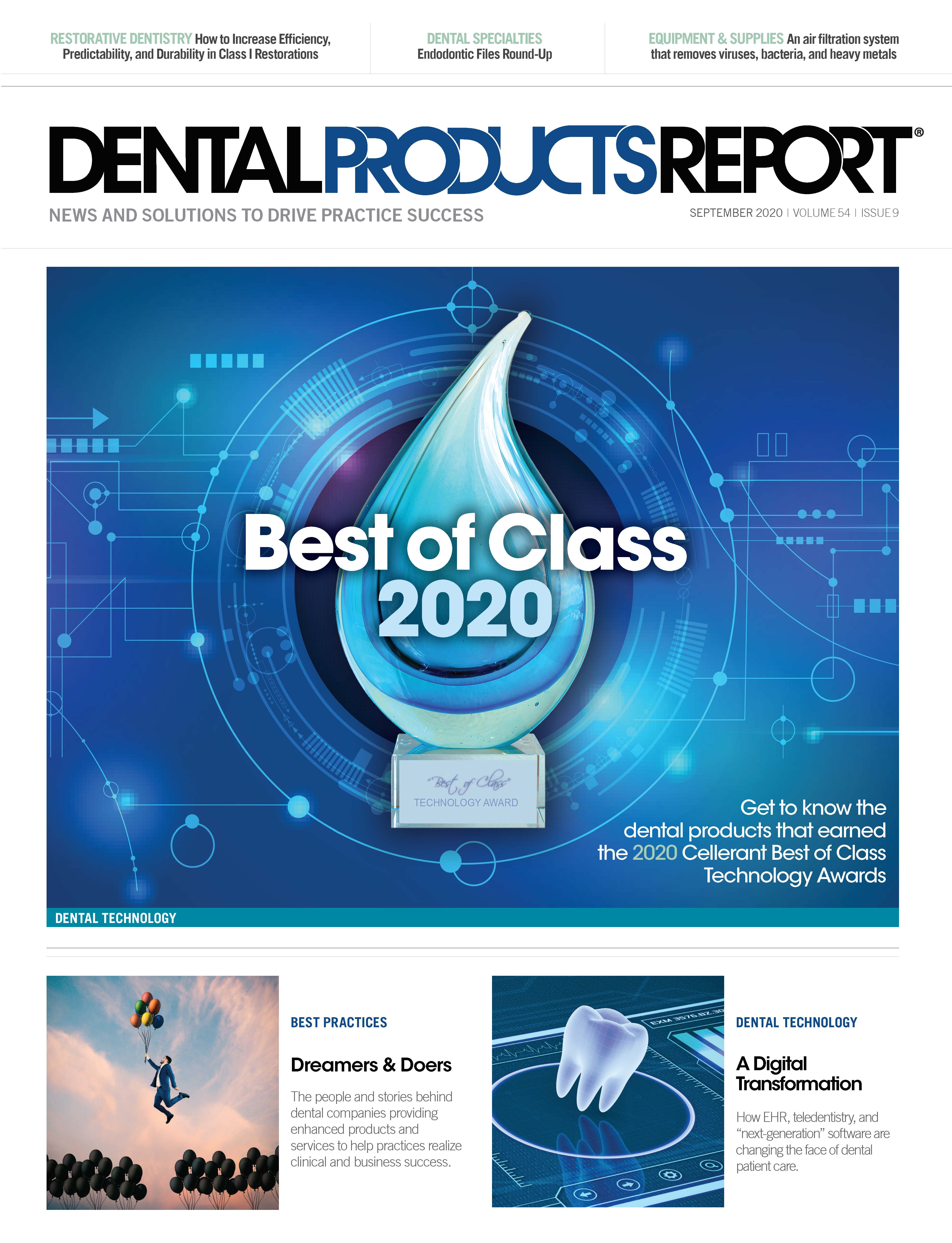
ACTIVA BioACTIVE Bulk Flow Marks Pulpdent’s First Major Product Release in 4 Years
December 12th 2024Next-generation bulk-fill dental restorative raises the standard of care for bulk-fill procedures by providing natural remineralization support, while also overcoming current bulk-fill limitations.